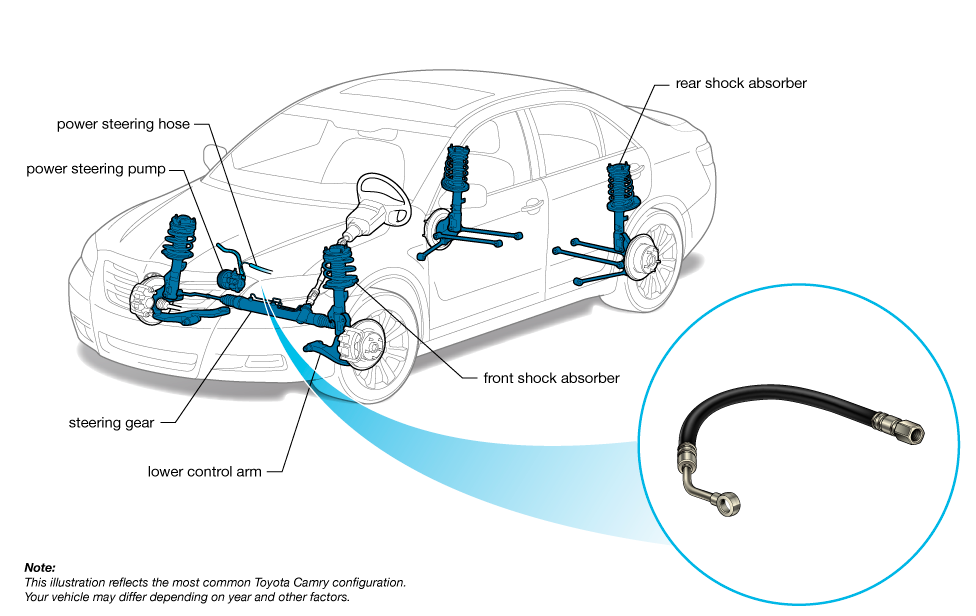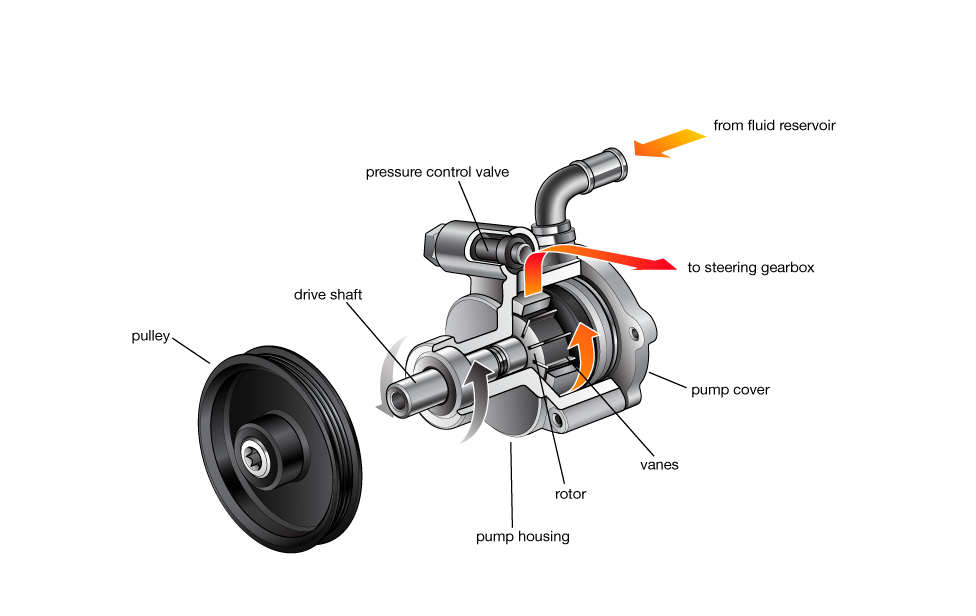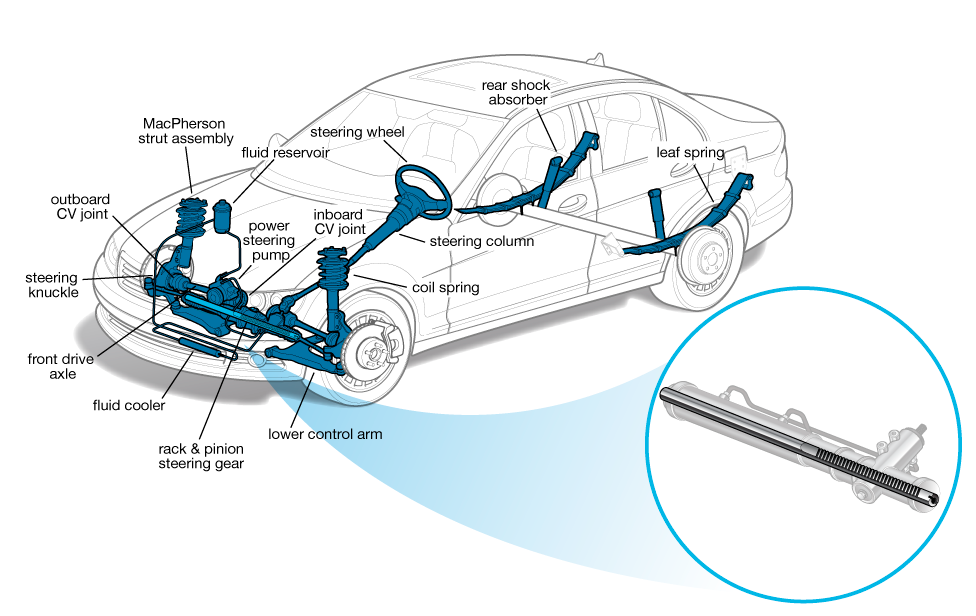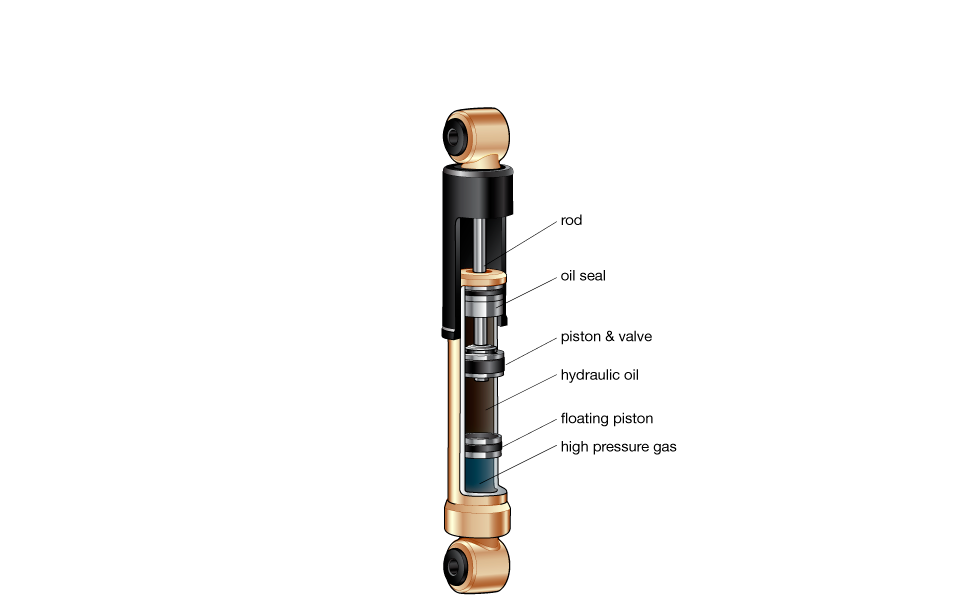
Listen, repeat, memorize!
Steering System - Power-Steering Hose
Power-steering hoses connect the steering pump to the rack-and-pinion assembly where pressurized fluid helps to push the rack left and right.
Worn or damaged steering hoses are common sources of steering-fluid leaks.
The power steering hose is what pushes the power steering fluid from the power steering pump to the rack and back from the rack to the power steering pump.
If there’s a leak in the power steering hose, or if it becomes rotten, you’ll need to replace the power steering hose.
Power steering hose kits will restore your steering control and responsiveness.
These lines are made from premium materials for long-lasting service life and are designed to fit your specific vehicle for a problem-free installation.- Listen to the Text:

Listen, repeat, memorize!
Steering System - Power-Steering Pump
The power-steering pump pressurizes the hydraulic fluid that helps the driver turn the steering wheel.
Signs of steering-pump failure include leaks, noises or decreased assistance while steering.
The immediate loss of power assist is more likely a sign of a broken drive belt or the loss of steering fluid.
Most vehicles employ this type of mechanical/ hydraulic power steering, but because their pumps rob power and efficiency even when the car isn’t turning, a small percentage of cars use an electric pump and many new vehicles now have electric power assist.
It’s easy to take the convenience of modern-day power steering for granted, but if there are problems with your power steering system, it can feel like you time-traveled back to the 1950s when your wheel with ease.
Power steering pumps are designed to help you turn your steering wheel smoothly, with as little effort as possible, so you can grip the roads at every curve.
Listen to the Text:
Listen, repeat, memorize!
Steering System - Steering Rack
Part of a rack-and-pinion steering system, the rack is a bar parallel to the front axle that moves left or right when the steering wheel is turned, aiming the front wheels in the correct direction.
The pinion is a small gear at the end of the vehicle’s steering column that engages the rack.
Though steering racks are hearty, they sometimes require replacement.
Signs of a failing rack include difficulty turning the steering wheel in one direction but not the other, jerkiness of motion or noises.
The steering rack is composed of a rack enclosed with a steering pinion.
It is connected to the steering wheel through the set of shafts and U-joints.
As the steering wheel is turned, the pinion moves and pushes the steering rack either to the left or right.
The ends of the steering rack are connected to the front wheels so the steering rack inputs and turns them to the left or the right as well.
Listen to the Text:
Listen, repeat, memorize!
Shock Absorber
The “shock” is a suspension component that controls the up-and-down motion of a vehicle’s wheels.
Though the devices provide some shock absorption, the job of absorbing shocks is handled mostly by the springs.
More accurately called dampers, “shocks” damp excessive motion, keeping the vehicle’s body from bouncing down the road.
Cars with worn-out shock absorbers illustrate what the devices are meant to do, because they tend to bounce continuously.
The bounce test is a time-honored method of checking shock-absorber health, but mechanics might also spot oil leaking from the shock, which means the component is starting to fail and should be replaced.
Uneven tire wear is another sign of shock failure.
Worn-out shocks compromise a car’s roadholding and braking.
Listen to the Text:
